- Blog
- Geo Mapping
- How Location Intelligence Software Drives Smarter Expansion Decisions
Expanding into a new region is always a risk—but with the right location intelligence software, it becomes a calculated one. Gone are the days of relying solely on intuition or outdated reports. Today’s high-growth businesses are turning to geospatial analytics to guide every expansion move, from site selection to customer profiling. By visualizing market gaps, competitor locations, and demographic trends, executives can confidently answer the question: “Where should we go next?” The result? Smarter, faster growth—backed by data.
The Power of Business Location Analysis
Business location analysis is more than placing a pin on a map—it’s about understanding what that location means in context. With the right location intelligence software, companies can overlay customer location data, income levels, traffic patterns, and existing store performance to evaluate true market potential. Whether you’re launching a new franchise or adding distribution centers, this level of precision prevents costly missteps and ensures every move aligns with your goals.
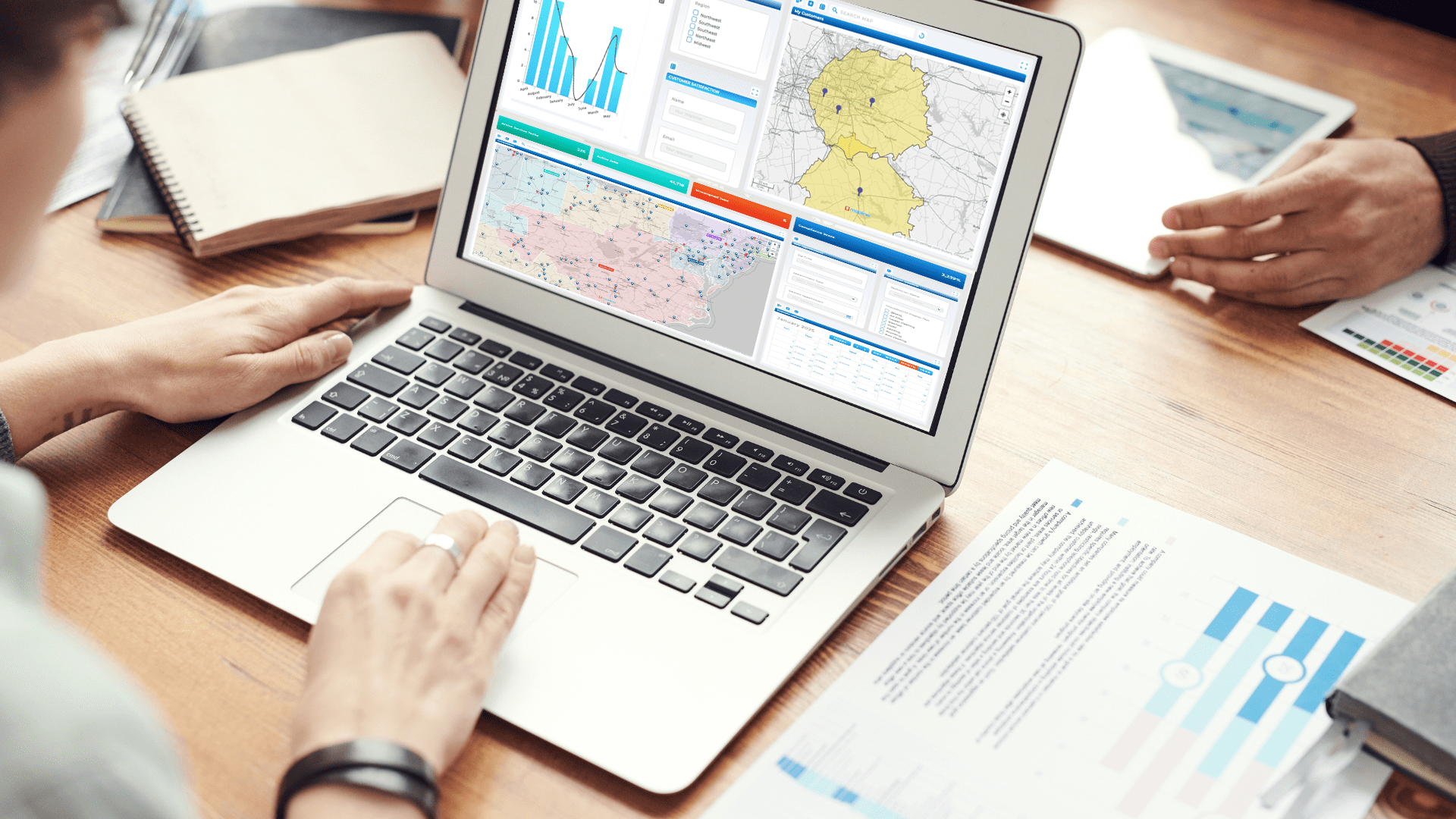

Pro Tip: Want a smarter way to expand your footprint? Mapline’s location intelligence software equips you with powerful analytics, mapping tools, and strategic insights to grow your business with confidence.
How Retailers Use Spatial Data to Expand
Retailers use retail location intelligence to predict performance before they ever sign a lease. By analyzing heat mapping software and sales zones, they can determine which neighborhoods have unmet demand or high-value customers. Tools like spatial decision support systems allow them to compare trade areas, population density, and brand saturation in seconds. This leads to more strategic investments—and fewer regrets.
Real-World Examples of Retail Expansion with Location Intelligence Software
Retailers across the country are turning to location intelligence software to reduce expansion risks and improve store performance. By analyzing customer density, sales patterns, and competitive landscapes, brands can make data-backed decisions about where to open new locations, close underperforming ones, or reallocate resources. Whether you’re a regional chain or a national franchise, visualizing data geographically uncovers insights that spreadsheets often miss. From pinpointing high-potential zip codes to mapping sales by demographic trends, Mapline helps retailers expand with confidence. Let’s take a closer look at the Mapline features that make this possible.
Customer Density Heat Maps
Mapline’s heat map generator makes it easy to identify regions with the highest concentration of current customers. By visualizing where your existing base is located, you can find natural zones for expansion, avoid cannibalizing nearby stores, and prioritize marketing efforts in areas with untapped potential. This helps ensure each new store opens in a place with built-in demand.
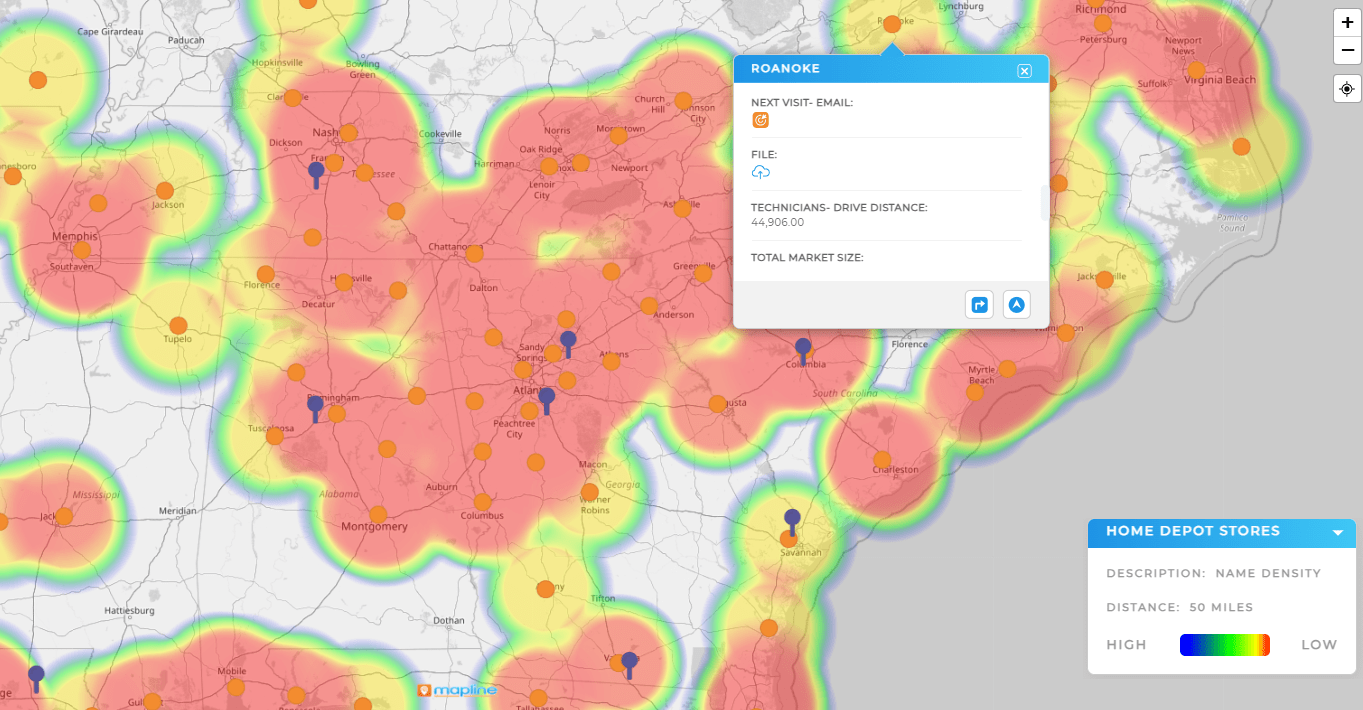
Demographic and Competitor Overlays
With Mapline Data, you can overlay demographic information—like income levels, population density, or age groups—alongside competitor locations. This enables smarter retail site selection by revealing underserved markets or areas where your brand has a strategic edge. The ability to layer datasets supports deeper market analysis that goes beyond guesswork.
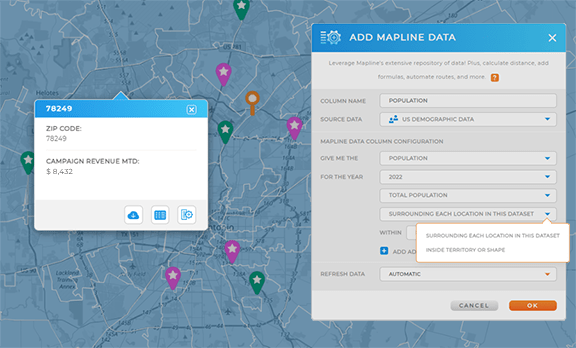
Zip Code Market Analysis
Retail brands often make expansion decisions at the zip code level. Mapline makes it simple to group and filter data by postal code, making it easy to assess store performance, market saturation, and regional growth trends. You can even color-code zip codes by sales volume, lead generation, or campaign response rates to guide next steps.
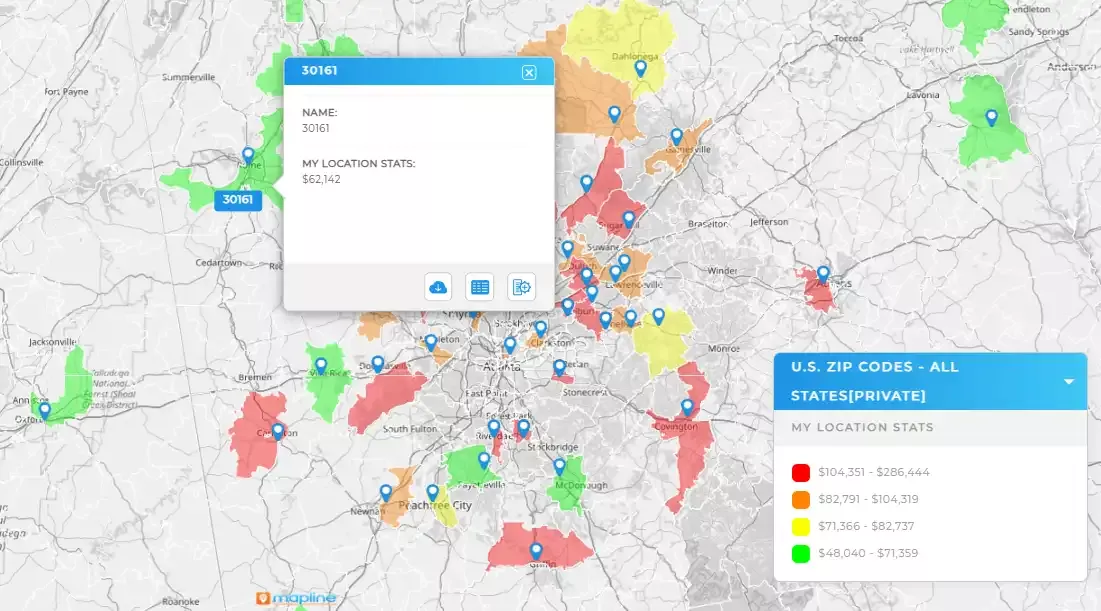
Store Performance Dashboards
Mapline’s interactive dashboards allow retailers to track KPIs like revenue, foot traffic, or delivery volume by region. These visuals keep teams aligned on which stores are thriving, which need support, and where customer behavior is shifting. Executives can spot performance issues early and plan territory-level interventions quickly.
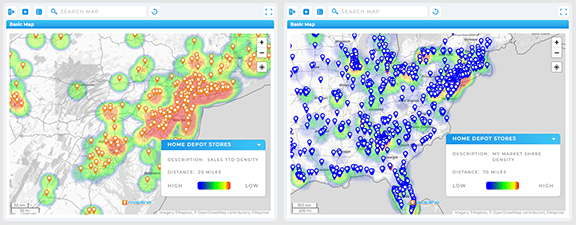
Real Estate and Franchise Expansion Made Easy with Location Intelligence Software
For franchises and real estate developers, geographic business intelligence is a game-changer. Custom demographic mapping tools reveal age ranges, spending habits, and lifestyle preferences that affect market viability. Competitive location analysis also plays a key role, letting decision-makers assess whether a location will thrive or flounder based on nearby players. Expansion becomes less about chance—and more about evidence.
Scale Smarter with Location Intelligence Software
Business expansion doesn’t have to feel like a gamble. With modern location intelligence software, your team can pinpoint the best regions for growth based on real-world data, not just assumptions. From startups to enterprise chains, the path to scalable success starts with seeing your data on the map—and knowing how to act on it.
Both. Many mapping platforms allow for real-time data tracking alongside historical analysis, which supports agile decision-making and up-to-date forecasting models.
They help businesses visualize geographic data like customer locations, sales volume, and competitor presence to support strategy and decision-making.
Upload your data and use territory shapes, pin maps, or heat maps to visualize sales, revenue, or customer volume by region.
Yes. You can add competitor location data to identify overlap, saturation, or whitespace opportunities.
You can segment by customer type, industry, revenue tier, geographic region, or any field in your dataset.









